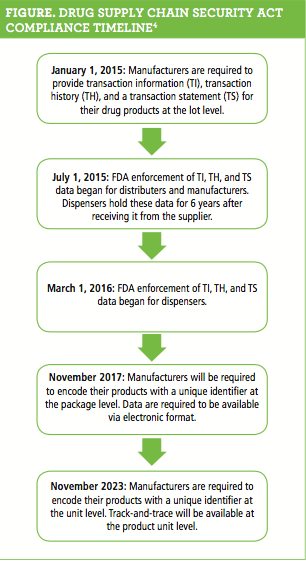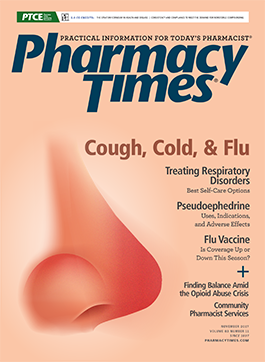What Are the Drug Supply Chain Security Act's Key Provisions?
The purpose of the drug supply chain security act (DSCSA) was to create an electronic system to track and trace certain prescription drugs in the United States.
The purpose of the drug supply chain security act (DSCSA) was to create an electronic system to track and trace certain prescription drugs in the United States. The law regulates transactions between dispensers and pharmacies and also among manufacturers, repackagers, wholesale distributors, third-party logistics providers, and trading partners.1 The enacted and newly enforced law has a variety of key provisions.
First, it established product tracing, which provides a step-by-step account of where a drug product has been located and who has handled it. Second, the law established product verification to ensure that a drug product is legitimate and unaltered. Third, the law addresses detection and response, which mandates that any party covered under this act must quarantine and investigate any suspect drug.
Notification has also been established as a key pro- vision of this law and is implemented by engaging in a system in which it is mandatory to promptly report to the FDA any illegitimate or adulterated drug products. Wholesaler licensing and third-party logistics provider licensing are also a component of the DSCSA.2
The combination of these provisions is designed to facilitate vast decreases in the number of adulterated and illegitimate products on the market.
Over a 10-year period, the DSCSA should be able to accomplish at least 3 goals, according to the FDA. First, the system should allow for verification of the legitimacy of a drug product down to the package level. This leads to the second proposed accomplishment of this act: illegitimate products in the drug supply chain should be easily detectable. Finally, the system should aid in a more successful drug recall situation.3
The overarching purpose of this new law is to more efficiently ensure patient safety by preventing illegitimate or recalled drug products from entering the market. The logging and record maintenance of all pharmaceutical products’ change-of-ownership information initially will be maintained via paper, but by November 2017, all must be transmitted via electronic format (see figure 4). Additionally, for the first 10 years of legislative enactment, products will be tracked and traced to the lot level. After this initial 10-year period, products will be tracked down to the unit level.4

Clearly, the law will continue to have a huge impact on the daily responsibilities of a pharmacist. The Pew Charitable Trusts stated in a recent article that “pharmacies are the last stop in the distribution supply chain before medicines reach patients, so their participation is an essential component of the new DSCSA system.”5 With the correct action plan, the law could positively affect patient care and the pharmaceutical market for many years to come.
Chelsea King is a third-year PharmD student at the University of Kentucky College of Pharmacy as well as a student in the MBA degree program at the UK Gatton College of Business and Economics.
Joseph L. Fink III, BSPharm, JD, DSc (Hon), FAPhA, is a professor of pharmacy law and policy and the Kentucky Pharmacists Association Endowed Professor of Leadership at the University of Kentucky College of Pharmacy, Lexington.
References
1. US Department of Health and Human Services. The Drug Supply Chain Security Act implementation: product tracing requirements for dispensers — compliance policy; guidance for industry, availability. Federal Register. 2015;80(128):38449-38450. gpo.gov/fdsys/pkg/FR-2015-07-06/pdf/2015-16401.pdf. Accessed September 8, 2017.
2. Bernstein, IBG. Drug Supply Chain Security Act..ncsl.org/documents/health/ibernsteinff13.pdf. Accessed September 8, 2017.
3. US Food and Drug Administration. Drug Supply Chain Security Act (DSCSA). fda.gov/Drugs/DrugSafety/DrugIntegrityandSupplyChainSecurity/DrugSupplyChainSecurityAct/. Updated August 29, 2017. Accessed September 8, 2017.
4. InfiniTrak. Pocket guide to the Drug Supply Chain Security Act (DSCSA). infinitrak.us/about-us/download-our-pocket-guide-to-the-drug-supply-chain-security-act-dscsa/. Accessed September 8, 2017.
5. The Pew Charitable Trusts. Pharmacy implementation of the Drug Supply Chain Security Act. pewtrusts.org/~/media/assets/2014/09/dsp_drugsafety_dcscafactsheet_v2.pdf. Published September 2014. Accessed September 8, 2017.

